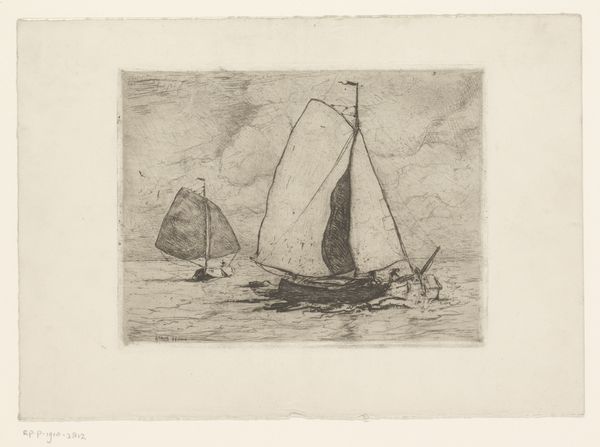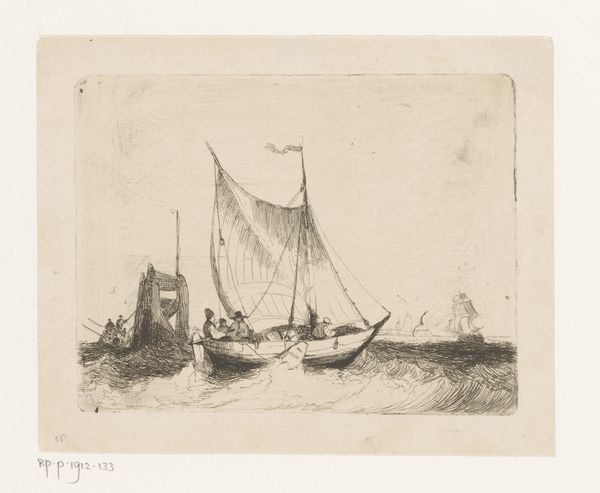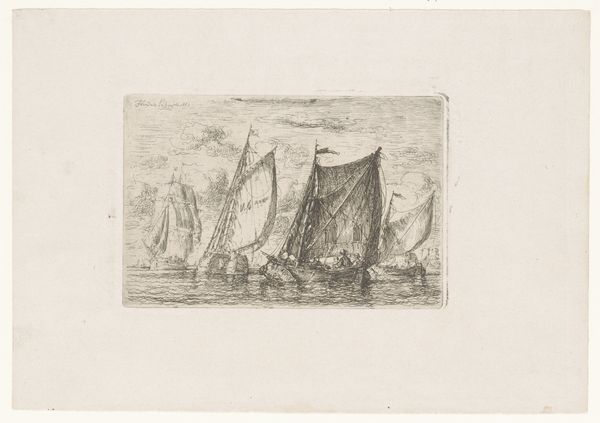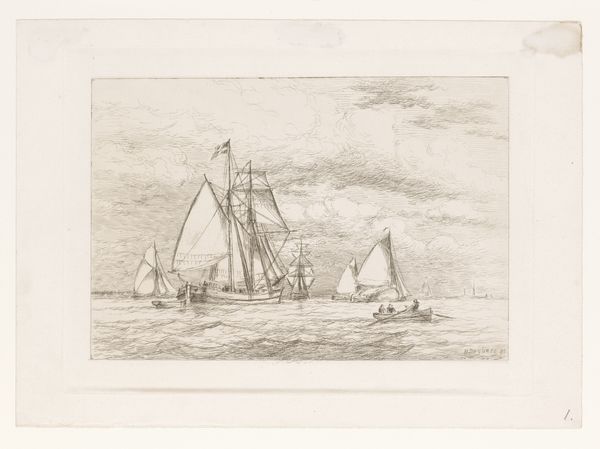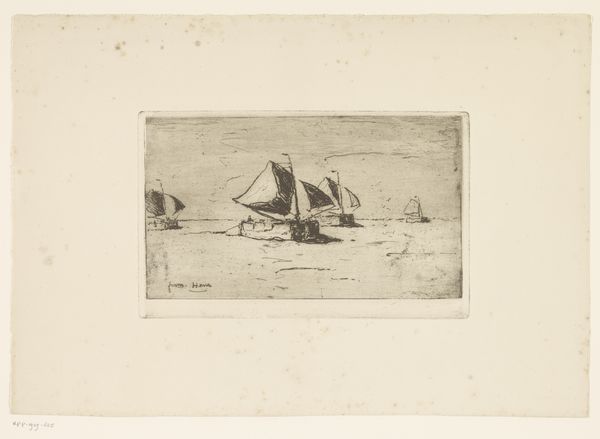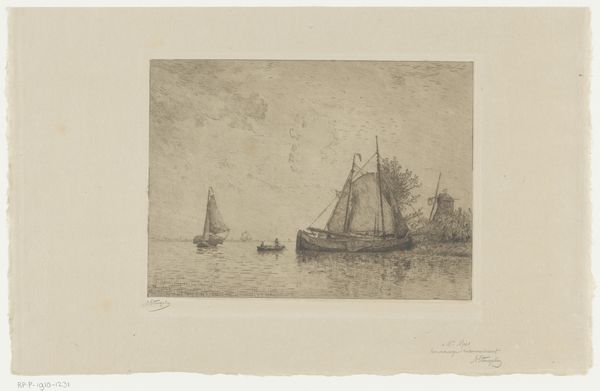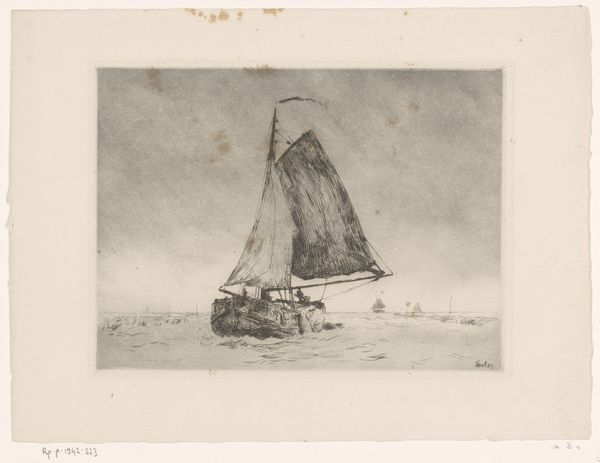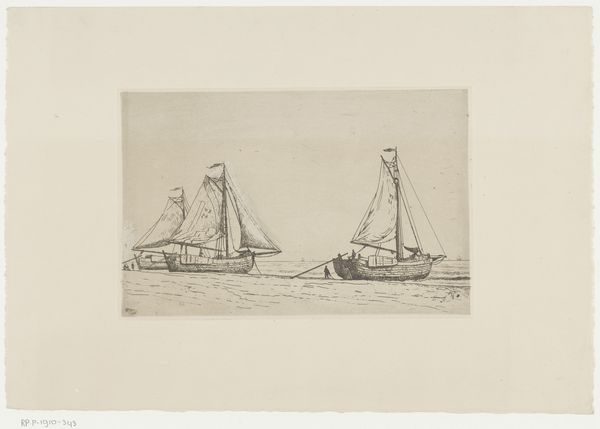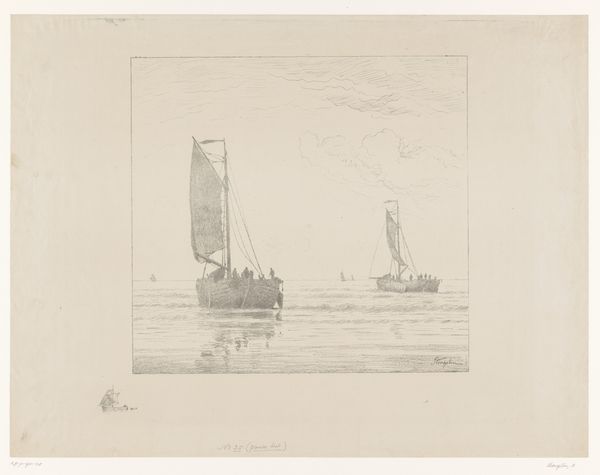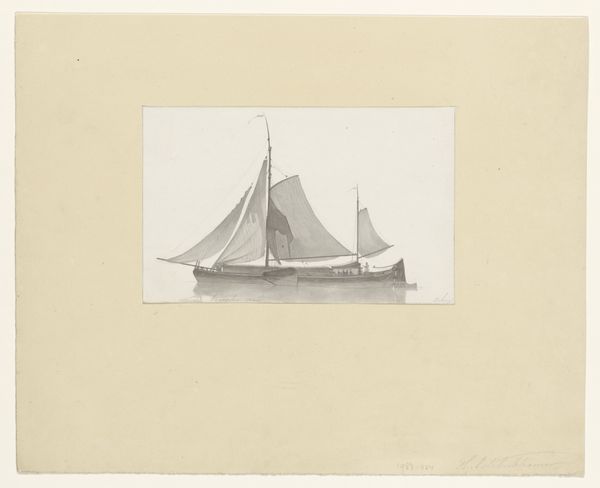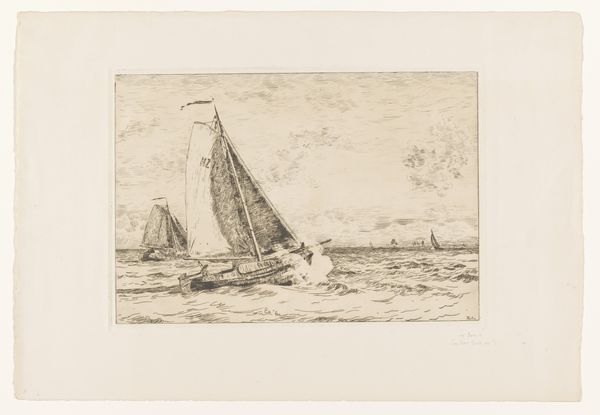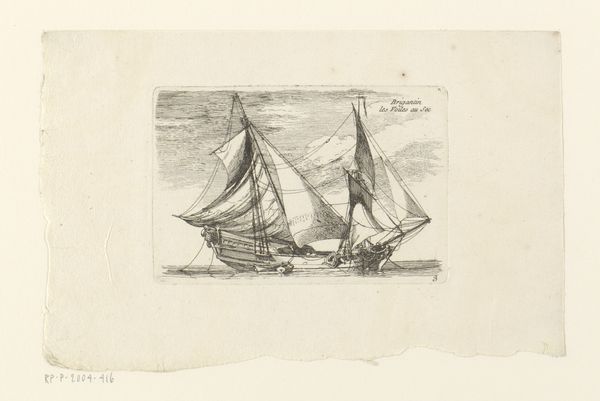
drawing, print, etching, paper, ink
#
drawing
# print
#
etching
#
landscape
#
etching
#
paper
#
ink
Dimensions: height 160 mm, width 208 mm
Copyright: Rijks Museum: Open Domain
Curator: Look at the Hendrick Hamel’s etching, "Two Sailing Ships on the Water," likely crafted between 1866 and 1910. It’s a wonderful example of how the printmaking process could capture fleeting moments of everyday life. Editor: It has a really muted, ghostly quality, doesn’t it? Makes me think of whispered stories from a distant shore. A certain wistful nostalgia floats off of the page here for me. Curator: Absolutely, that subdued tone is typical of etchings from this era. The technique itself, using acid to bite into a metal plate, inherently creates a particular kind of line, and its reproductive potential allowed for wider consumption, playing an interesting role in visual culture back then. The materials matter, they change our interaction with images. Editor: The boats feel solitary though. Each floating its own direction or purpose on the water with its own story to write—and it makes me think of each visitor seeing them today, carrying so many individual backstories and baggage to unpack with them in this moment. It's almost like a mirror. Curator: A key component in its distribution and access that can change so many hands over time is that cheap etching prints are far cheaper and easily bought and owned then traditional original oils from masters we know today. The work becomes far more accessible for display to people. It truly reflects how people are seeing the world. Editor: I do think it is remarkable, these inky, skeletal sailboats are all they are, nothing is there except the basics, yet it suggests so much more—all those quiet adventures the viewer's mind starts to wander toward. Is the fog about to roll in? Or are the boats just getting home as the light fades? Curator: Seeing the work as not merely an image but an artifact, one intricately linked to the economies of art and image consumption reveals more meaning on repeated viewing of this image. It opens discussions on wider accessibility to art. Editor: Seeing how simply the boatman are drawn and yet that feels powerful. A symbol of resilience of the ordinary man pushing to be seen across generations. Curator: Exactly. It makes us question who produces these images and what the social consequences are when these works end up in ordinary peoples’ living rooms. Editor: Indeed. There's something grounding and evocative in these simple, replicated forms which transcend time. The dreams of yesteryear drifting, perhaps, closer to our shores even now.
Comments
No comments
Be the first to comment and join the conversation on the ultimate creative platform.
